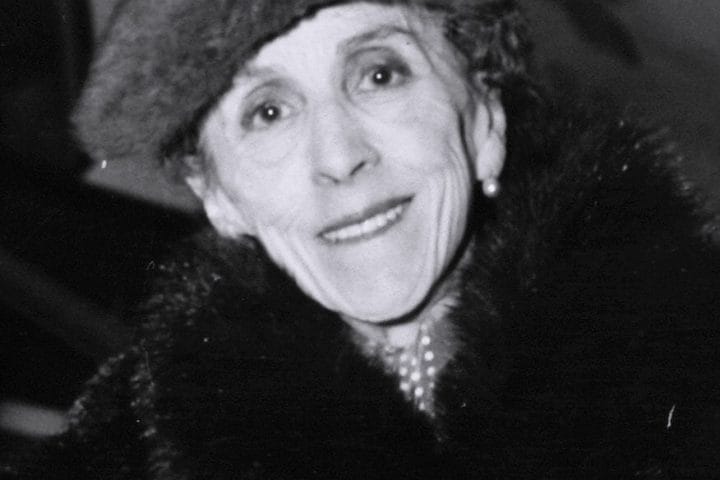Tom Wolfe was a literary force unlike any other, challenging conventions and reshaping the narrative landscape of American literature. With his distinctive style—marked by vivid prose and a keen eye for cultural nuance—Wolfe captured the zeitgeist of the 20th century, exploring everything from the counterculture of the 1960s to the rise of contemporary urban life. His ability to blend journalism with fiction not only entertained readers but also provoked thought, making him a true maverick in the literary world. As we delve into his remarkable career and enduring influence, we uncover the complexities of a writer who was not afraid to push boundaries and redefine storytelling.
Early Life and Education: The Foundation of a Literary Giant
Tom Wolfe was born on March 2, 1930, in Richmond, Virginia, into a family that valued education and intellectual pursuits. His father, Thomas Kennerly Wolfe Sr., was an agronomist, and his mother, Helen Hughes Wolfe, was a landscape designer. This nurturing environment fostered his early love for reading and writing. Wolfe attended St. Christopher’s School in Richmond, where he first demonstrated his flair for storytelling and a penchant for distinctive prose. After high school, he pursued higher education at Washington and Lee University. There, he majored in English and participated actively in the student newspaper, honing his skills in both journalism and creative writing. His experience at the university was formative, as it allowed him to experiment with different writing styles and explore various subjects. Following his undergraduate studies, Wolfe attended Yale University, where he earned a Ph.D. in American Studies. His time at Yale was particularly influential; it was here that he developed a deeper understanding of American culture and history, themes that would later permeate his literary works. The rigorous academic environment also instilled in him a disciplined approach to research and writing, elements that became hallmarks of his distinctive style. It was during these formative years that Wolfe began to cultivate his unique voice—a blend of meticulous observation, vivid description, and a keen sense of the absurd. His educational background not only provided him with the tools to analyze and critique society but also inspired him to push the boundaries of traditional literary forms. This foundation would prove invaluable as he embarked on his groundbreaking career in journalism and literature.
Pioneering New Journalism: Redefining Nonfiction
Tom Wolfe was a central figure in the emergence of New Journalism, a movement that revolutionized the world of nonfiction by incorporating literary techniques typically reserved for novels. This innovative approach allowed journalists to tell stories with greater depth, emotion, and narrative complexity. Wolfe’s contributions to this genre began in earnest during the 1960s when he wrote for publications such as Esquire, The New York Herald Tribune, and New York magazine. One of Wolfe’s most influential works from this period is “The Kandy-Kolored Tangerine-Flake Streamline Baby,” a collection of essays that showcased his unique ability to blend meticulous reporting with creative storytelling. His writing was characterized by its energetic prose, detailed characterizations, and an almost cinematic portrayal of events. Wolfe’s essays didn’t just inform readers; they immersed them in the experiences he described, from the high-octane world of custom car culture to the peculiarities of American social life. Wolfe’s immersion into his subjects was profound. He often spent months, even years, researching and living among the people he wrote about, capturing their voices and nuances with striking authenticity. This immersive method set Wolfe apart from traditional journalists and solidified his reputation as a pioneer of New Journalism. “The Electric Kool-Aid Acid Test,” perhaps his most famous work of New Journalism, further cemented his status. Chronicling the adventures of Ken Kesey and the Merry Pranksters, the book exemplified Wolfe’s talent for combining factual reporting with a narrative style that was both engrossing and unconventional. Through works like these, Wolfe redefined the boundaries of nonfiction, proving that true stories could be just as compelling and artistically rich as fiction.
Distinctive Writing Style: A Blend of Art and Observation
Tom Wolfe’s writing style is nothing short of iconic, combining meticulous observation with a vibrant, almost theatrical prose. He often employed a technique he called “saturation reporting,” immersing himself deeply into the lives and environments of his subjects. This allowed him to capture the essence of his topics with unparalleled authenticity. Wolfe’s prose is characterized by its vivid imagery, rhythmic cadence, and inventive punctuation, which together create a dynamic reading experience. One of his signature techniques was the use of “onomatopoetic” words—terms that phonetically imitate the sounds they describe. This not only added a layer of sensory detail but also imbued his narratives with a lively, almost musical quality. Wolfe’s sentences often defied conventional structure, with ellipses, exclamation marks, and italics serving to convey the emotional intensity of his scenes. This stylistic flair set him apart from his contemporaries, drawing readers into a world where language was as dynamic as the stories themselves. Wolfe’s keen eye for detail extended to his characterizations. He had an uncanny ability to capture the quirks and idiosyncrasies of the people he wrote about, rendering them in a way that felt both larger-than-life and deeply human. His characters often leapt off the page, their voices and mannerisms meticulously crafted to reflect their inner lives and social contexts. This blend of artful observation and innovative prose made Tom Wolfe a literary maverick, whose influence continues to resonate in the world of modern literature.
Major Novels: From “Bonfire of the Vanities” to “I Am Charlotte Simmons”
Tom Wolfe’s foray into novel writing yielded some of the most memorable works of contemporary American literature. His debut novel, “The Bonfire of the Vanities,” published in 1987, is a scathing critique of 1980s New York City. It delves into the intersecting lives of Wall Street bond trader Sherman McCoy, his mistress, and an ambitious journalist, painting a vivid portrait of greed, ambition, and social stratification. Wolfe’s meticulous attention to detail and sharp social commentary made the novel a bestseller and a cultural phenomenon. In 1998, Wolfe released “A Man in Full,” another expansive exploration of American life, this time focusing on Atlanta. The novel examines themes of race, economic disparity, and personal integrity through its complex characters, including a struggling real estate magnate and a disgraced college athlete. Wolfe’s narrative prowess and keen sociological insights earned the book critical acclaim and commercial success. “I Am Charlotte Simmons,” published in 2004, marked another ambitious endeavor, this time turning his keen eye on American college life. The novel follows the journey of Charlotte Simmons, a bright but naive freshman, as she navigates the pressures of academia, social life, and personal identity at an elite university. Through Charlotte’s experiences, Wolfe offers a candid look at the cultural and moral complexities of modern higher education.
Cultural Critic: Examining Society Through a Literary Lens
Tom Wolfe’s career was not merely about storytelling; it was a profound critique of American society. Through his incisive observations and sharp wit, he dissected the cultural and social mores of his time, often exposing the underlying absurdities and hypocrisies. Whether chronicling the flamboyance of the 1980s financial world in “The Bonfire of the Vanities” or delving into the countercultural revolution of the 1960s in “The Electric Kool-Aid Acid Test,” Wolfe’s works served as sociocultural barometers, capturing the spirit and contradictions of different eras. His writings were imbued with a sense of urgency and relevance, often tackling pressing issues such as consumerism, class disparity, and the quest for identity. Wolfe’s astute analysis extended beyond mere critique; he offered a mirror through which society could examine itself. By blending immersive journalism with rich, narrative prose, he provided readers with a textured, multifaceted view of American life. Wolfe’s role as a cultural critic was further solidified through his essays and articles, which appeared in prominent publications and often stirred public debate. His ability to weave sociopolitical commentary into compelling narratives made him a formidable voice in contemporary literature, one who challenged readers to reconsider their own perceptions of the world around them.
Lasting Influence: Tom Wolfe’s Legacy in Modern Literature
Tom Wolfe’s influence on modern literature is profound and far-reaching. His pioneering work in New Journalism has inspired countless writers to merge factual reporting with literary storytelling, blurring the lines between fiction and nonfiction. Authors such as Hunter S. Thompson and Joan Didion have echoed his innovative techniques, further cementing his impact on the genre. Wolfe’s novels, with their keen social critiques and vivid characterizations, have also left an indelible mark. His fearless exploration of contemporary issues has paved the way for a new generation of novelists who tackle societal complexities with similar boldness. Beyond specific genres, Wolfe’s stylistic innovations—his energetic prose, use of onomatopoeia, and inventive punctuation—have challenged writers to experiment with form and language, pushing the boundaries of what literature can achieve. Wolfe’s legacy endures not just in the themes and styles he popularized, but in the enduring courage he instilled in writers to question, probe, and, most importantly, innovate. His work continues to serve as a beacon for literary mavericks, inspiring them to redefine the landscape of American literature.













